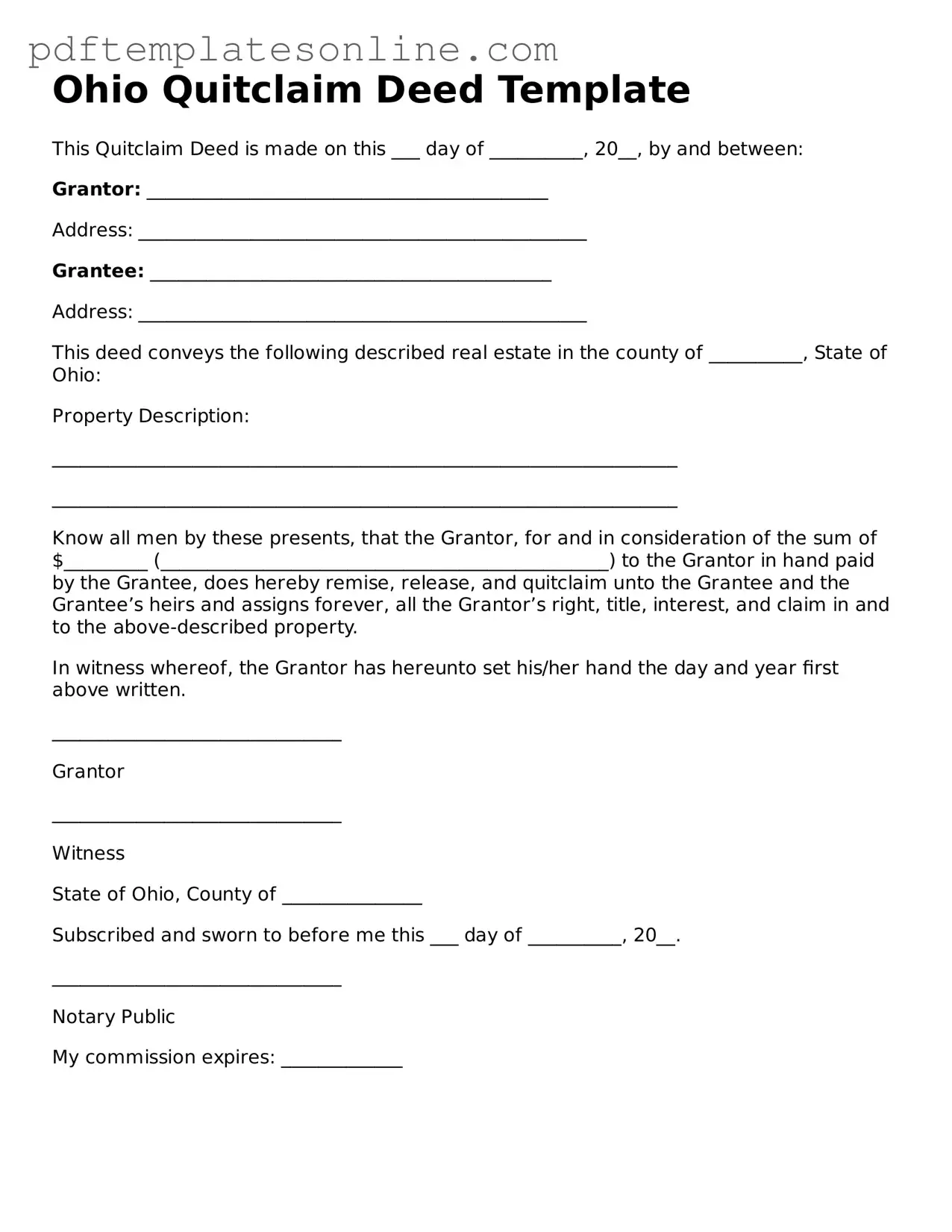Filling out a Quitclaim Deed in Ohio can seem straightforward, but many people encounter pitfalls that can lead to complications down the road. One common mistake is failing to include the correct legal description of the property. This description must be precise, as it identifies the property being transferred. Omitting details or using vague terms can result in confusion or disputes later.
Another frequent error is neglecting to include the names of all parties involved. Both the grantor (the person transferring the property) and the grantee (the person receiving the property) must be clearly identified. Incomplete or incorrect names can invalidate the deed, causing legal headaches for everyone involved.
Many individuals also overlook the importance of notarization. A Quitclaim Deed must be signed in the presence of a notary public to be legally binding. Failing to have the document notarized can render it ineffective, meaning the property transfer may not be recognized by the state.
Inaccurate dates can create confusion as well. It is essential to include the correct date of execution on the deed. This date marks when the transfer takes place and can impact the timeline of ownership. Errors here can lead to misunderstandings about when the property officially changes hands.
Another mistake involves the failure to check for existing liens or encumbrances on the property. Before transferring ownership, it's crucial to ensure that there are no outstanding debts or claims against the property. If these issues are not addressed, the grantee may inherit unwanted financial obligations.
Some individuals also forget to provide a clear statement of consideration, which is the amount paid for the property. While a Quitclaim Deed does not require a specific amount, including a nominal sum (like $1) can clarify the intent of the transaction and help avoid potential disputes.
Additionally, people often neglect to file the Quitclaim Deed with the county recorder's office after completion. This step is vital, as it officially records the transfer of ownership and provides public notice. Without this filing, the deed may not be enforceable against third parties.
Lastly, many individuals fail to seek legal advice before completing the Quitclaim Deed. Consulting with a real estate attorney can help identify potential issues and ensure that all necessary steps are taken. This guidance can save time, money, and stress in the long run.
